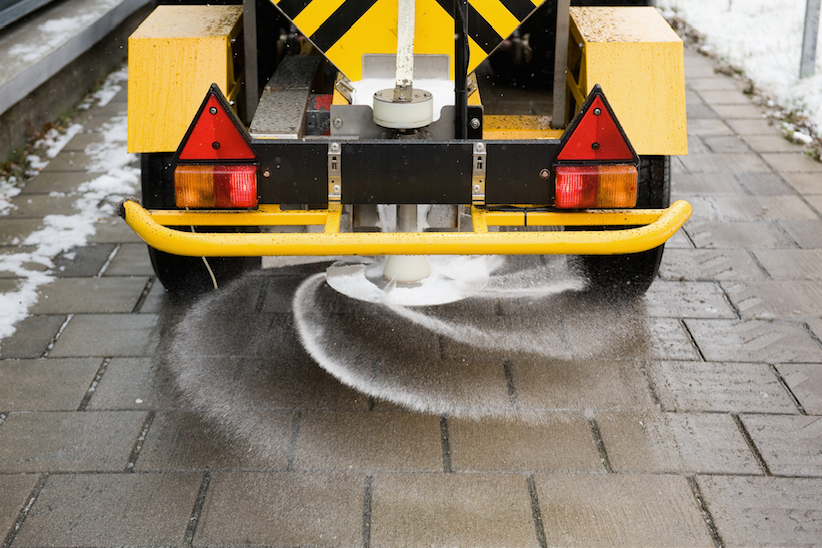
Snow removal is a tedious task but essential if you are to avoid accidents and liabilities. One of the most common ways to get rid of snow is with salt, which, although reasonably effective, does have several negative side effects:
- Every year, millions of tons of salt from deicing roads and walkways leach heavy metals in water supplies.
- Salt harms feeding animals when it enters soil.
- Pieces of salt may lodge in the paws of pets causing a painful burning sensation.
- Salt is corrosive and can damage concrete, paving, and interior flooring when carried inside on shoes.
Luckily, there are numerous alternatives to salt that are more efficient and better for the environment.
Alternatives to Salt:
1. Calcium Magnesium Acetate (CMO)
Made from dolomitic lime and acetic acid, CMO was introduced in the late 1970s, making it one of the first alternatives to salt. It usually comes in solid form but is also available as a liquid. CMO is environmentally friendly, biodegradable, and has a low toxicity to wildlife. It is about as corrosive as tap water and requires fewer applications than salt. Its main disadvantage is that, like salt, it can make surfaces slick.
2. Shoveling
Shoveling is a viable option for small facilities or those with a large workforce willing to shovel after every snowfall. However, it is impossible to remove enough of the snow and ice to prevent hazards through shoveling alone. Therefore, it is usually necessary to combine this method with deicing chemicals or another one of the alternatives to salt.
3. Snow Blowers
Snow blowers are a fast way to remove snow down to the concrete and are much more efficient than shoveling. Unfortunately, they often use a lot of electricity or gas to run, especially if you need to clear a large area. Gas snow blowers in particular create a significant amount of air and noise pollution; plus they require regular tuning up, cleaning, and oil changes, which can be time consuming.
4. Sand
Although sand is less effective at melting snow than salt, it creates a better grip in ice and has a lower cost than any chemical deicer. However, sand can clog storm drains, causing expensive cleanups and an increased risk of flooding. Sand also has an environmental impact if it runs off into water supplies.
5. Natural remedies
Beet and corn liquid solutions, created with by-product of brewing at alcohol distilleries, are high in carbohydrates that often melt snow faster than salt. These alternatives to salt present no danger to the environment, wildlife, or people and may even reduce corrosion. The only downside is the liquids’ strong smell.
6. Potassium acetate
Potassium acetate can melt ice at even colder temperatures than salt — as low as -75 °F (-60 °C). The chemical is noncorrosive, biodegradable, and requires fewer applications than salt. However, it leaves surfaces slippery, lowers oxygen levels in water, and costs around eight times the price of salt.
7. Heated snow melting mats
One of the best ways to avoid slips and falls and to reduce the risk of subsequent lawsuits is with industrial heated snow melting mats. These mats use electricity to heat up the ground and prevent snow from accumulating. They are very eco-friendly, will not damage vegetation or concrete, and pose no risk to animals.


